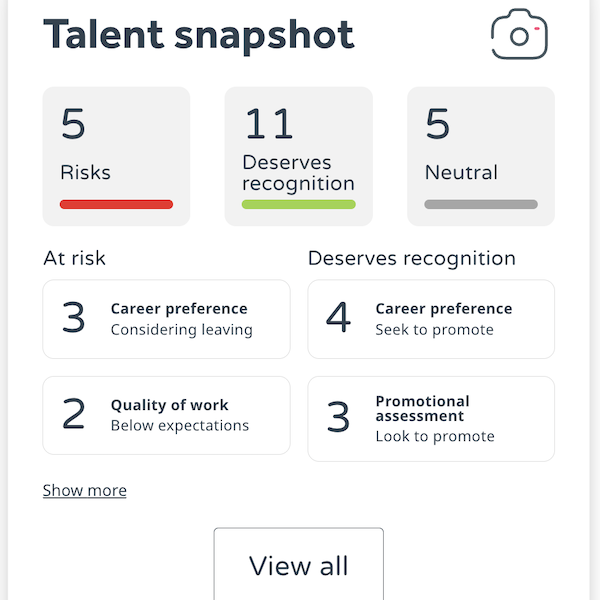There is no mystery about how to build an effective team: it happens automatically. Give a group of eight-year-olds a ball and they will improvise a game in no time, making up rules as they go to fit the available space and equipment. If the game goes well they will carry on playing until it’s too dark to see, and then go home hungry, exhausted, happy, and keen to do the same thing again tomorrow. Collaboration is no mystery here, it is part of the game…
The successful game is run according to a clear set of operating rules which are fully shared and understood between the players. There are clear targets for each player, which again are jointly understood. People communicate in plain language or using terms that are, again, fully shared and understood by the team. There’s no question about the skills and resources that are needed, and people adopt roles in the team that fit with those skills, or acquire and practise skills that fit them for roles they would like to take.
Crucially, the players get a number of things out of the game, which in turn make them want to go on playing and putting in the effort to do it well – and these motivating factors, which are difficult to put a name to but which are utterly vital for sustainable individual and team performance, are also at the root of good motivation elsewhere.
But can a company work like that? Well, yes. In fact a company that works well is working like that, with a resulting sense of teamwork or collaboration every bit as strong as you might find in the kids playing after school.
So let’s look at the structure that would have to be in place for this to occur.
- The team members need to have a fully shared picture of what success would look like for their team.
- Every player needs to have a secure grasp of the knowledge and skills needed to do the work.
- There have to be the right resources of time, money, equipment, personnel, etc. in place
- As people use their skills to do the work and achieve the end results, this must in return generate the feelings that motivate them to carry on.
Knock any one of these elements out of place and the result can be chaos; people struggling to do things for which they are not equipped, people pulling in different directions, people ‘gaming’ the system to get what they need because the system doesn’t know how to provide it. But put all of these things together and everyone will be on the same page, working together to meet the company’s aims.
Some of this may come about by itself, as tends to happen with the eight year-olds, but work is not quite the same as knocking a ball about – there will be some adjustments needed to make the natural system of collaboration and motivation work in captivity, as it were.
So someone has to oversee the system in order to make sure this happens, and this, rather than telling people what to do, is the real job of the manager – or leader as we suggest you say.
Now some of the elements this leader will be overseeing are visible to the naked eye, but some are hard to put a name to, which is where we come in. As one of our recent clients out it, ‘I knew there was a problem, but I couldn’t put my finger on it’. We helped them to see where it was coming from and why, and helped the company learn how to get its staff focused on productive work.
Using an employee engagement survey tool
At a corporate, team, manager and individual level what can you learn from using WeThrive employee engagement software?
As you’ll know, there are differences between individuals in your teams, between the teams themselves, and between the company and others in the field. Much of this will be down to how well the structure referred to above is working, and that in turn will be in large part down to the managers.
There are many ways you can slice up the data.
You can look at the individual motivation maps within each team, to see what each individual might need to learn (with the manager’s help) in order to have a more productive, collaborative and creative time at work. Subsequent audits will show you who is learning and changing, and who is likely to remain an outlier – someone who is in the wrong place.
You can compare teams to see what needs to be done to improve management, environment, culture or resourcing in each team.
You can use the team results, together with the managers’ results, to customize the personal development plans for your managers, and watch the result on team satisfaction and performance.
So how is this different from other motivation questionnaires or employee engagement surveys out there?
First of all, we do not start by trying to measure the ‘personality’ of your employees.
Even assuming that could be done, accurately and repeatably (and that is a highly controversial idea), and even then assuming that it has any bearing on the success or otherwise of their time at work, your staff’s personalities are really not the biggest problem.
Companies across the world are filled with a cross-section of all human ‘personality types’, and yet some of these companies do well and others do badly. The only sane conclusion you can draw from this is that some companies’ systems are set up to work well for their employees and some are not.
What systems are these? Just about everything in your workplace environment and culture has the ability to enhance or to damage your employees’ motivation and performance. Some places have flexible learning cultures that understand the way their employees’ minds work and are able in the course of normal leadership and management to adapt automatically to new situations or spontaneous difficulties that arise, bringing in new knowledge and resources to help the staff continue to perform intelligently as opportunities or difficulties crop up. In these companies the managers are a resource to the staff they serve, continually communicating with the workforce, learning where effort is needed and reading the future so that new capacity can be developed in people before it is even needed.
Less successful cultures have their managers issuing orders to people who have not been given the knowledge or resources to carry them out, generating resentment, poor quality performance, burnout and eventually failure for the whole enterprise.
So in a nutshell, your staff are already there, and testing their personality isn’t going to change it – what you really need to do is find out why they are working inefficiently, forming silos, doing things you’d rather they didn’t, avoiding things you want them to do, and so on, and what you can do to improve the system so that it motivates them better.

